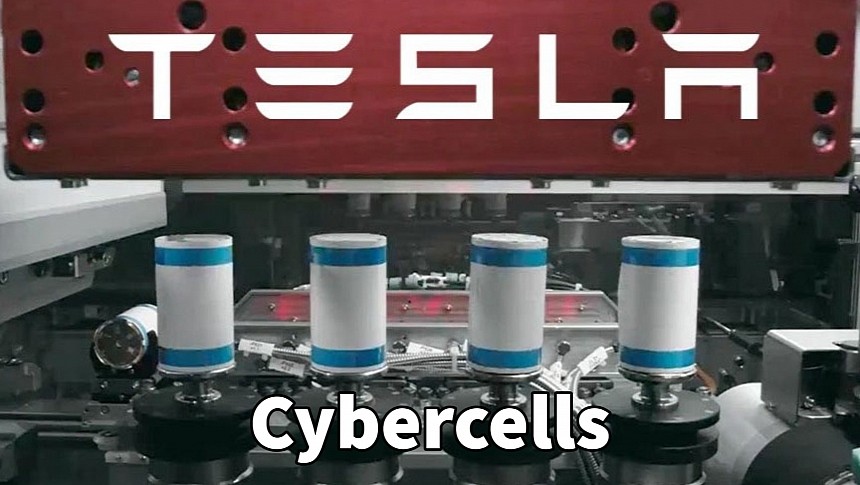Tesla slipped exciting details about the upcoming Cybertruck during the second-quarter earnings call on Wednesday. Probably the most interesting was the development of the second-generation 4680 battery cells used in the Cybertruck, which earned them the name "Cybercells."
After reporting impressive second-quarter deliveries and production numbers, Tesla underwhelmed investors with the financial data. Although revenue exceeded expectations, the operating margins slipped below 10% for the first time in more than two years. Still, there are many things to be excited about, whether you're a Tesla investor or an EV passionate. The Cybertruck is probably the most important, and Tesla did not disappoint with lots of details about the upcoming pickup.
For the first time ever, Elon Musk revealed that the Cybertruck would be less than 19 feet long, allowing it to fit in a residential garage. At the same time, it will have an impressive 6+ feet bed. For comparison, the Ford F-150 Lightning is 19.25 feet long and has a shorter, 5.5-foot bed. This shows how carefully Tesla used every inch to maximize space and increase utility. Still, the most exciting thing about the Cybertruck is arguably its battery pack.
As predicted, Tesla Cybertruck will have a structural battery pack using 4680 cells. Unlike the 4680 cells that power the Model Y AWD built at Giga Texas, the Cybertruck's cells are of a more advanced design. Tesla claims they have 10% higher energy density, being on par with the 2170 cells in this regard. During the Q2 earnings call conference, Tesla named these cells "Cybercells," implying that they will be unique to the electric pickup, at least for now.
According to Tesla's senior VP for Powertrain and Energy Engineering Drew Baglino, the increase in energy density was achieved "through process and mechanical design optimization." This implies that the chemistry improvements are far from reaching the potential promised during the 2020 Battery Day. Mechanical design optimization means that Tesla squeezed more tape inside the cells, possibly by making everything thinner.
What's important to note, though, is that this improvement is reached without using a silicon anode or the dry cathode manufacturing process. Both features were hyped on Battery Day, and Tesla promised that 4680 cells would have five times the energy capacity and six times the power delivery, allowing an EV to have 16% more range compared to 2170 cells. So far, despite Tesla's efforts, silicone anode and dry battery electrodes have not advanced far enough to be considered for volume production.
Baglino said that cell production at Giga Texas increased 80% quarter-over-quarter, with more than 10 million battery cells produced until now. Yields also improved, reducing the scrap bill by 40% and costs by 25%. Tesla is now comfortable with the costs per cell produced at Giga Texas. Things should improve through the end of the year and early 2024 as Tesla scales Cybercell production.
For the first time ever, Elon Musk revealed that the Cybertruck would be less than 19 feet long, allowing it to fit in a residential garage. At the same time, it will have an impressive 6+ feet bed. For comparison, the Ford F-150 Lightning is 19.25 feet long and has a shorter, 5.5-foot bed. This shows how carefully Tesla used every inch to maximize space and increase utility. Still, the most exciting thing about the Cybertruck is arguably its battery pack.
As predicted, Tesla Cybertruck will have a structural battery pack using 4680 cells. Unlike the 4680 cells that power the Model Y AWD built at Giga Texas, the Cybertruck's cells are of a more advanced design. Tesla claims they have 10% higher energy density, being on par with the 2170 cells in this regard. During the Q2 earnings call conference, Tesla named these cells "Cybercells," implying that they will be unique to the electric pickup, at least for now.
According to Tesla's senior VP for Powertrain and Energy Engineering Drew Baglino, the increase in energy density was achieved "through process and mechanical design optimization." This implies that the chemistry improvements are far from reaching the potential promised during the 2020 Battery Day. Mechanical design optimization means that Tesla squeezed more tape inside the cells, possibly by making everything thinner.
What's important to note, though, is that this improvement is reached without using a silicon anode or the dry cathode manufacturing process. Both features were hyped on Battery Day, and Tesla promised that 4680 cells would have five times the energy capacity and six times the power delivery, allowing an EV to have 16% more range compared to 2170 cells. So far, despite Tesla's efforts, silicone anode and dry battery electrodes have not advanced far enough to be considered for volume production.
Baglino said that cell production at Giga Texas increased 80% quarter-over-quarter, with more than 10 million battery cells produced until now. Yields also improved, reducing the scrap bill by 40% and costs by 25%. Tesla is now comfortable with the costs per cell produced at Giga Texas. Things should improve through the end of the year and early 2024 as Tesla scales Cybercell production.








